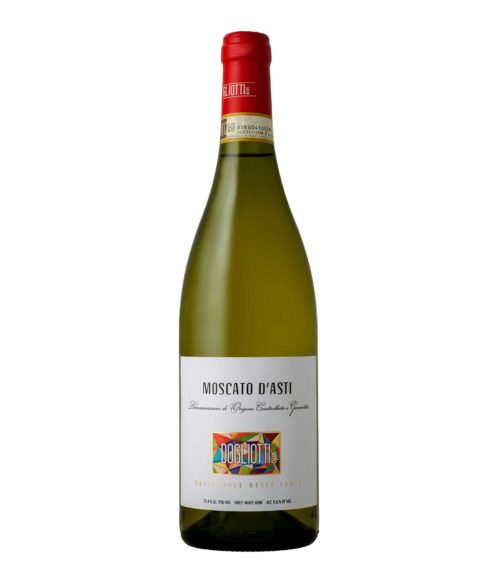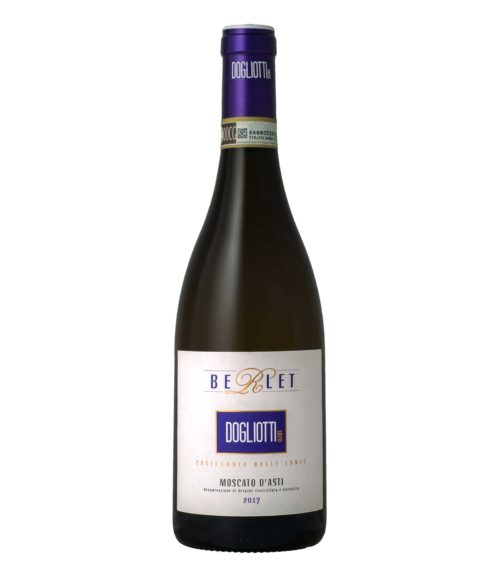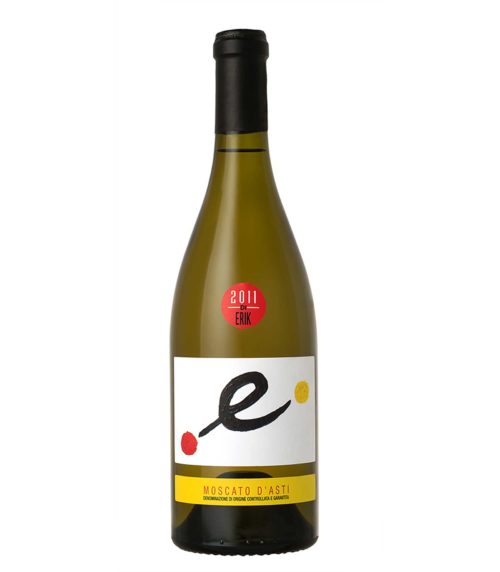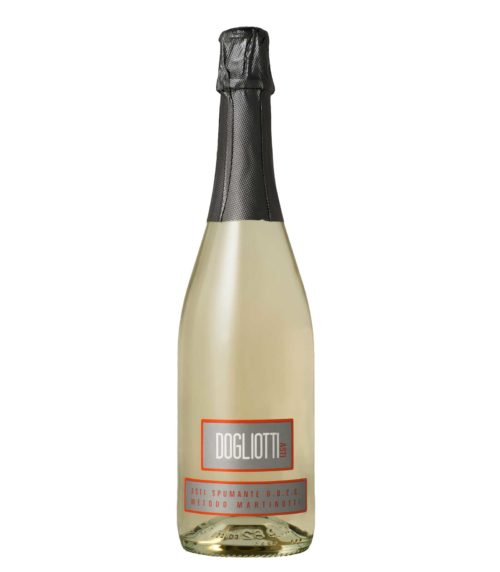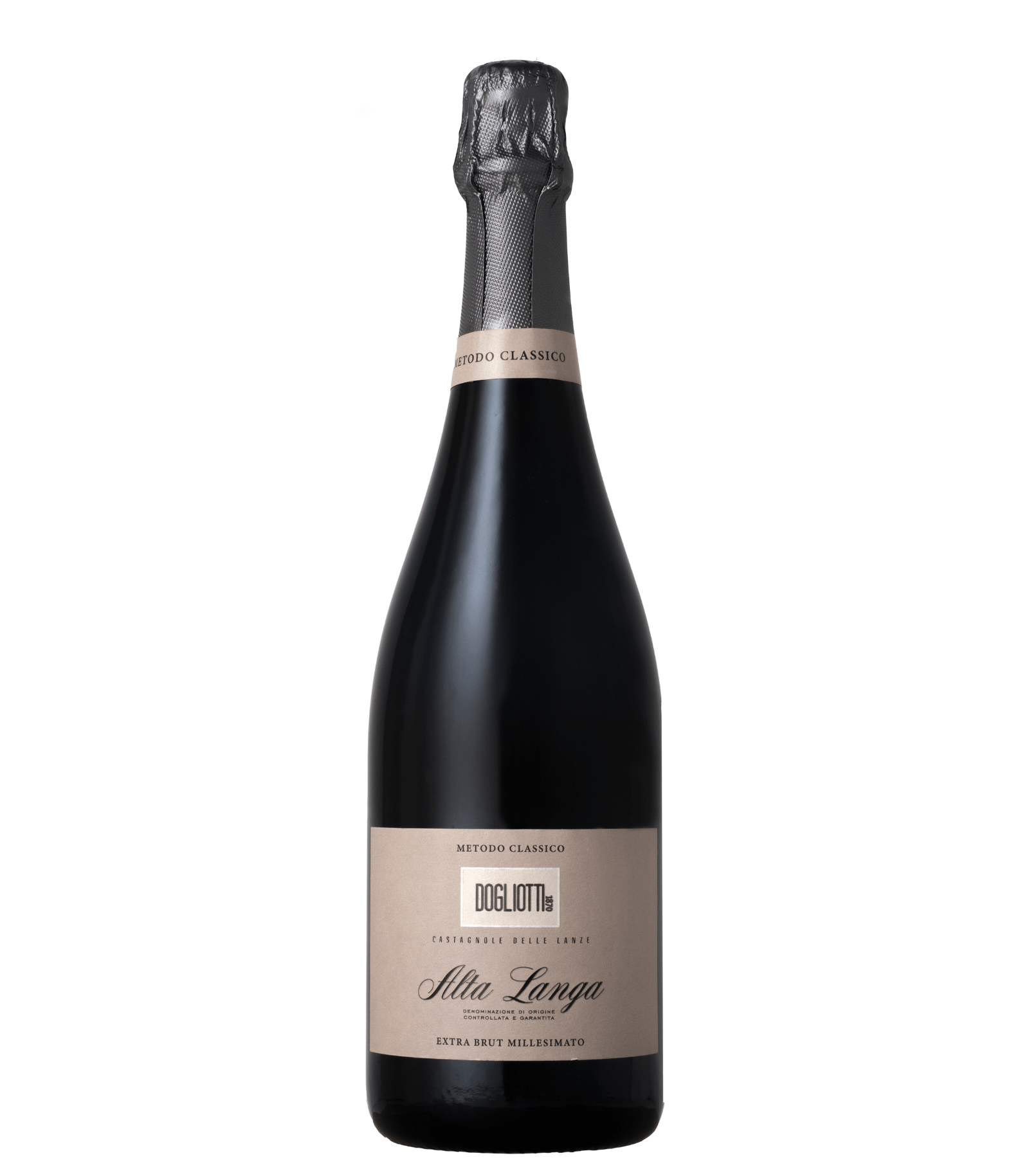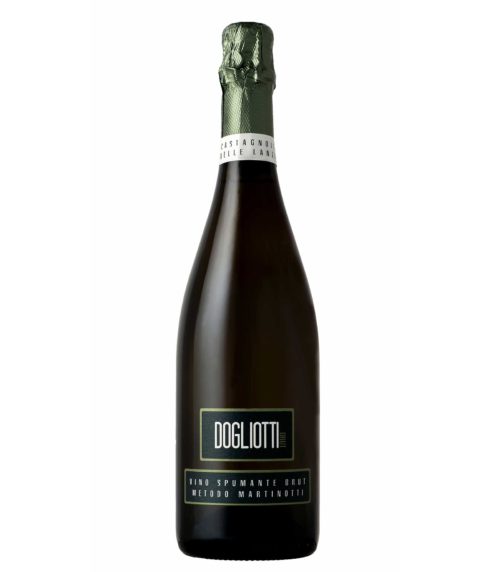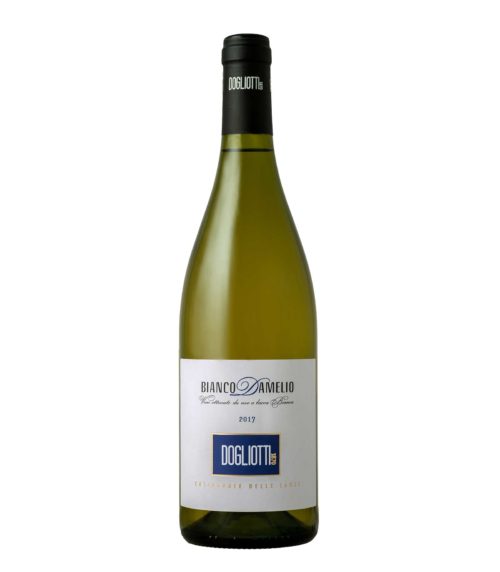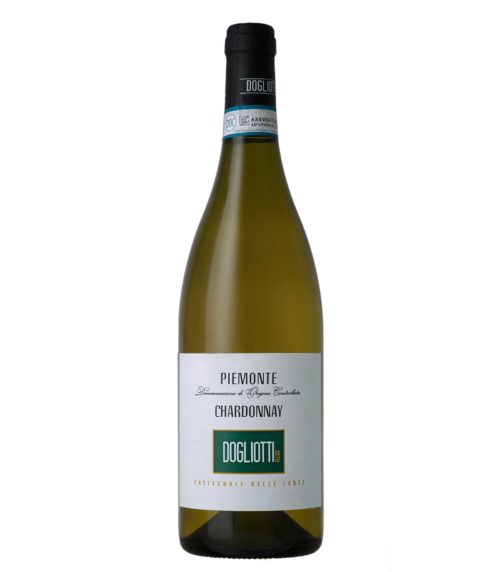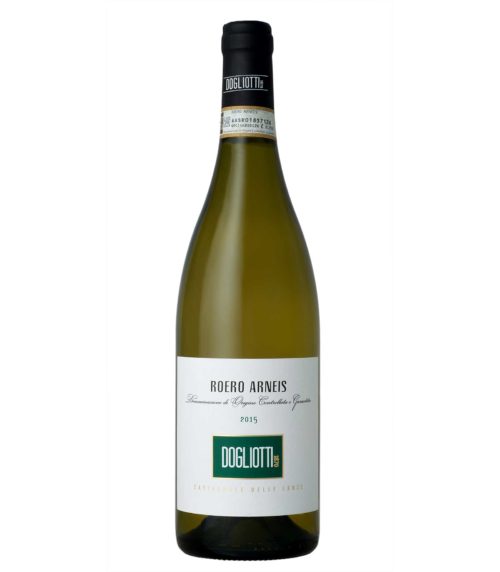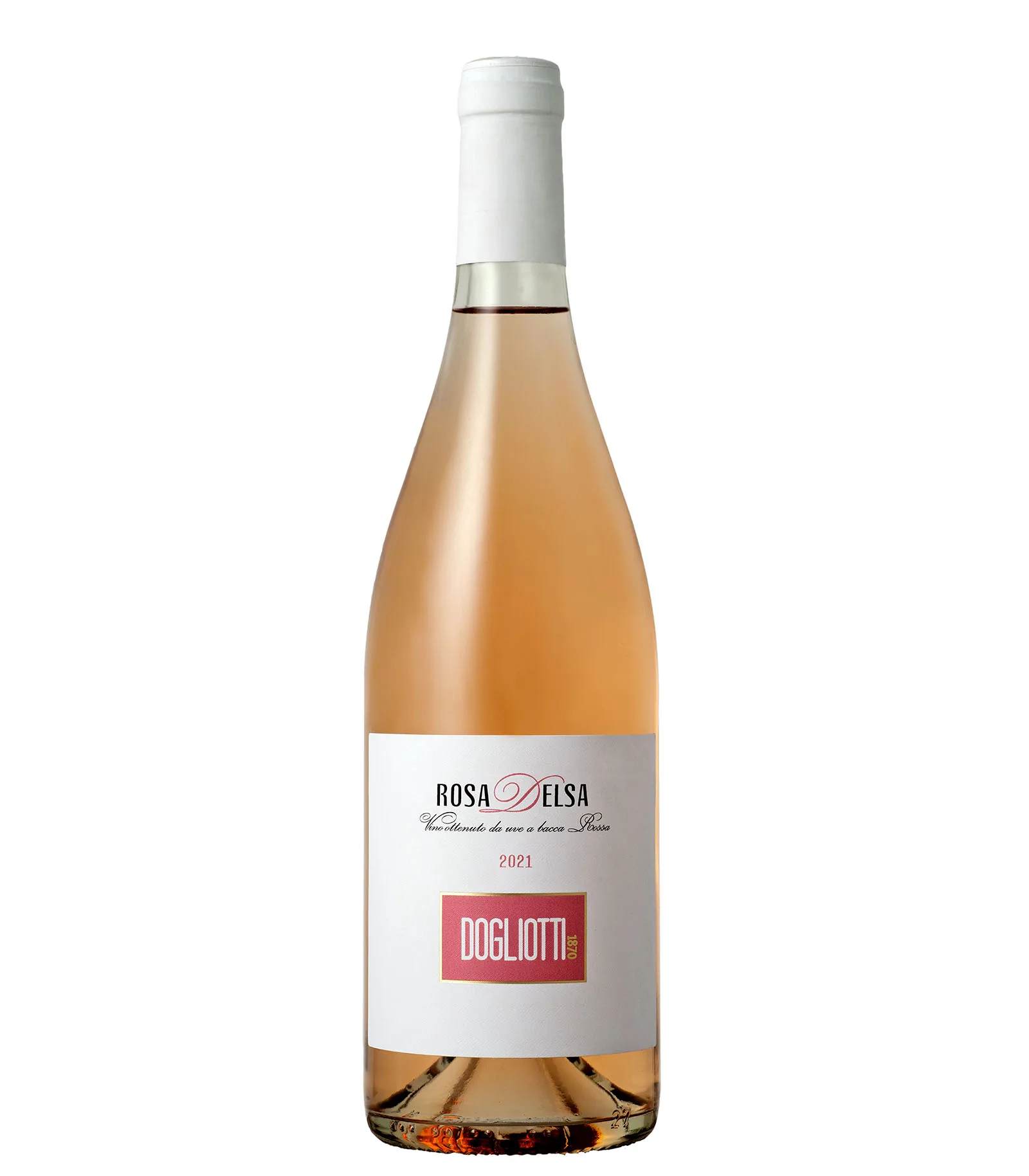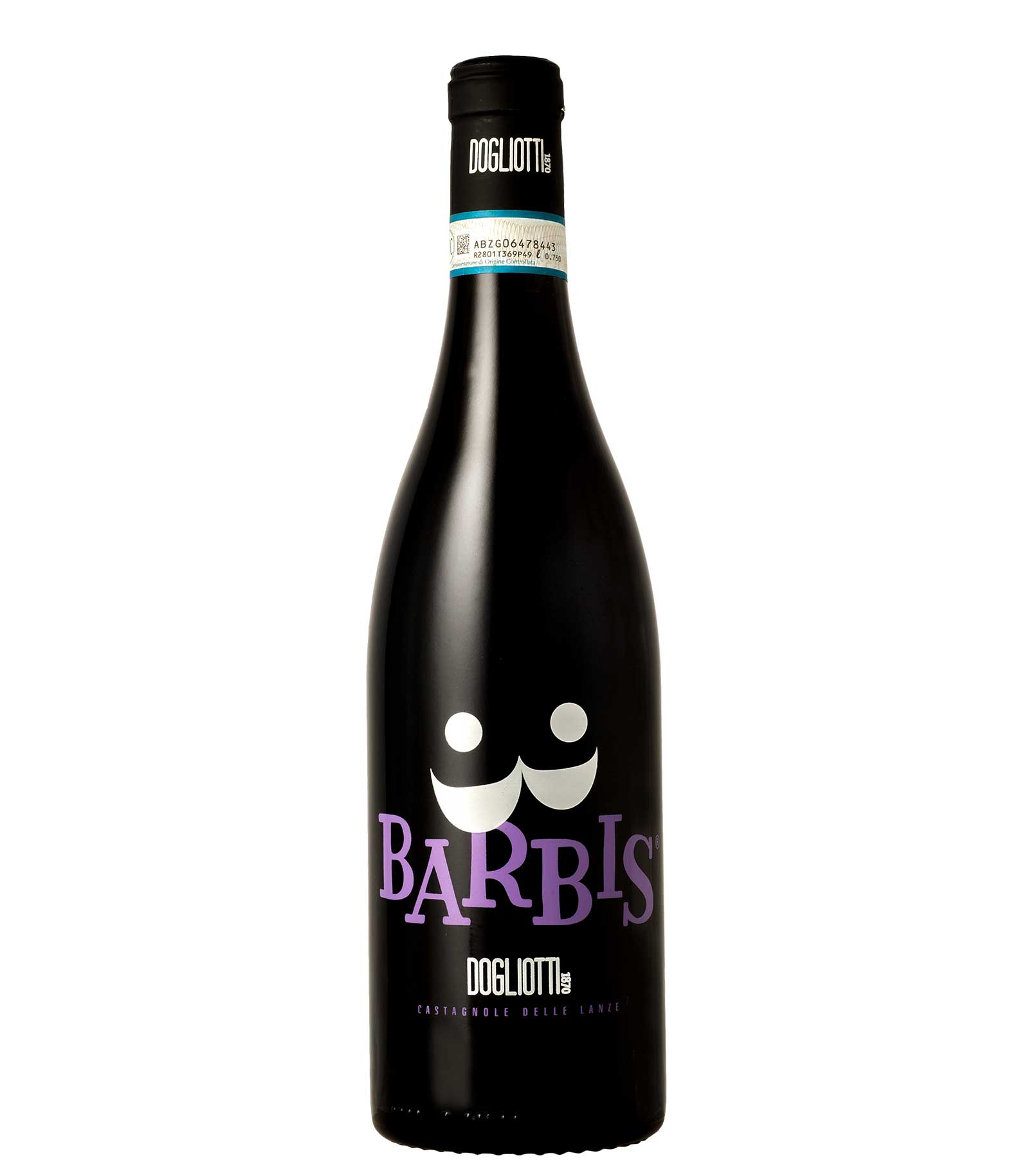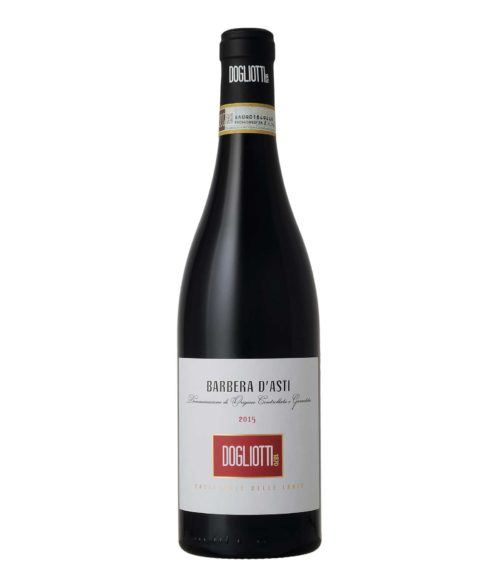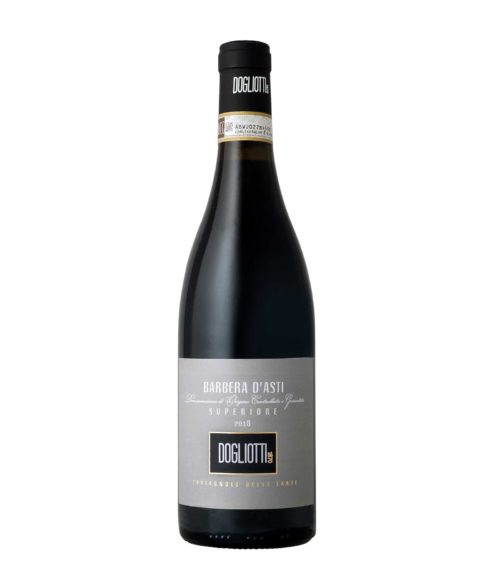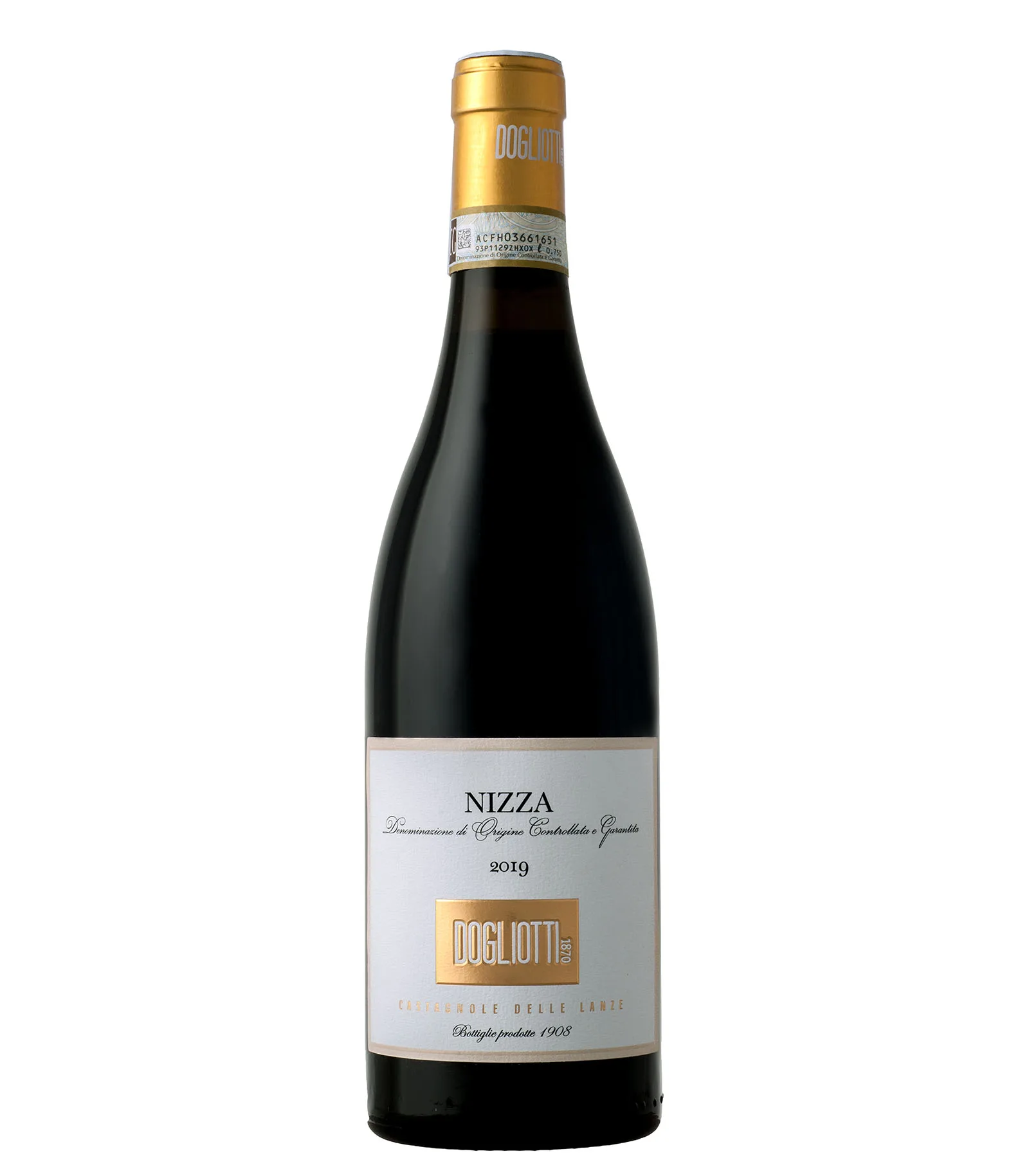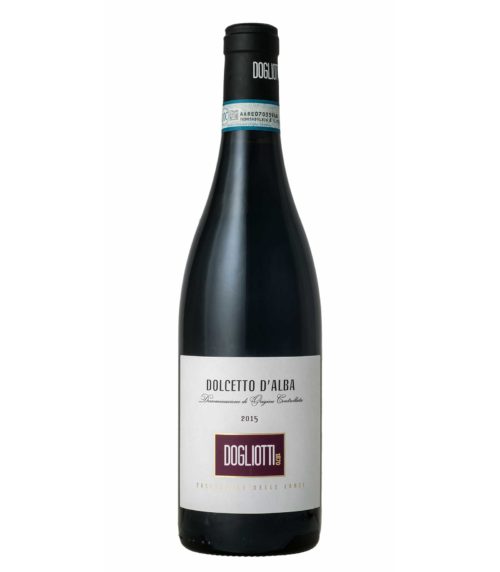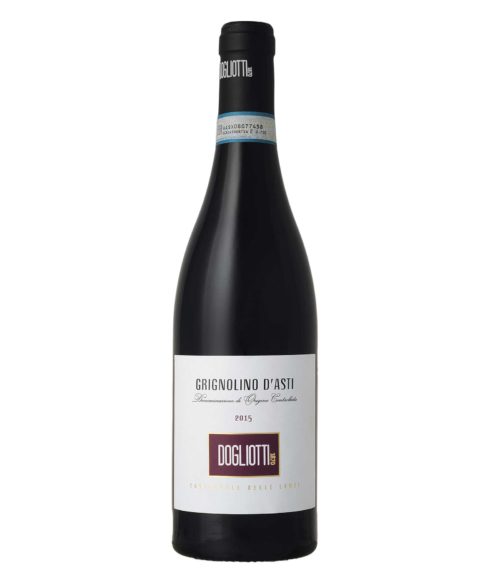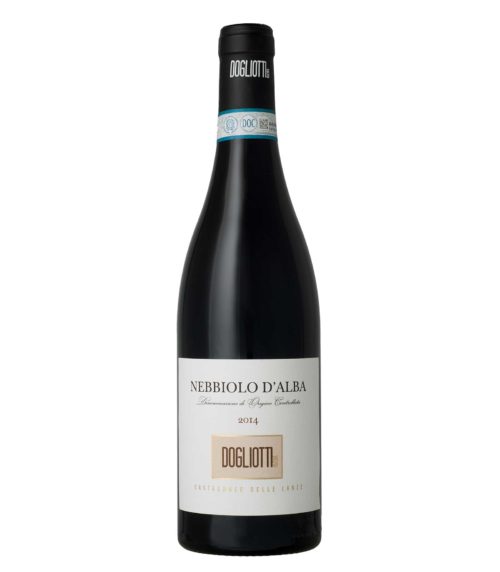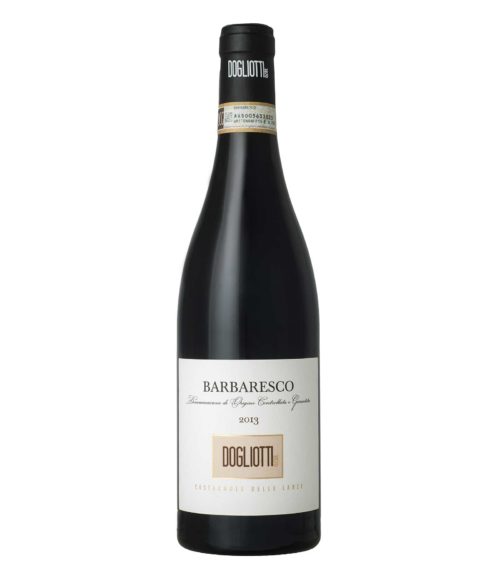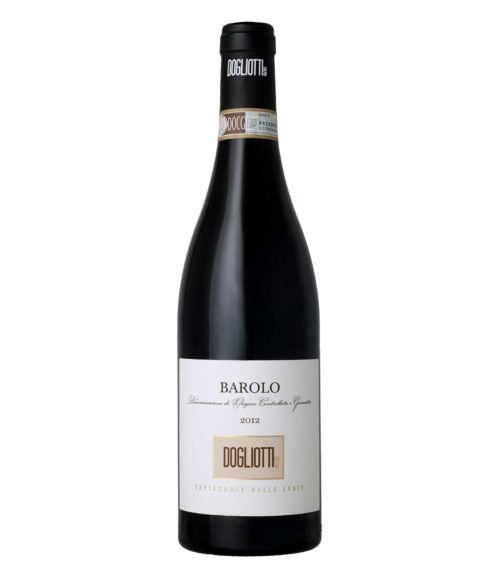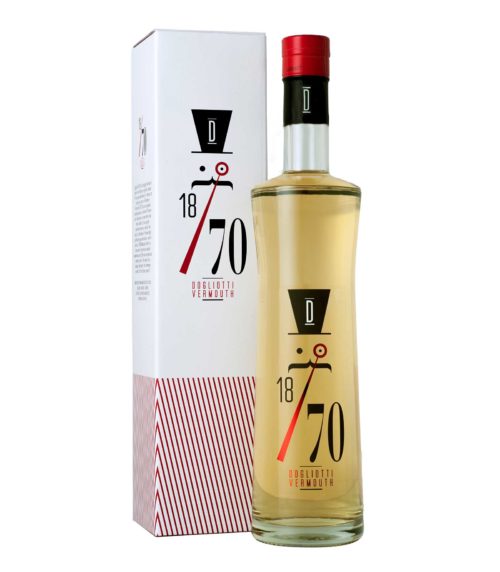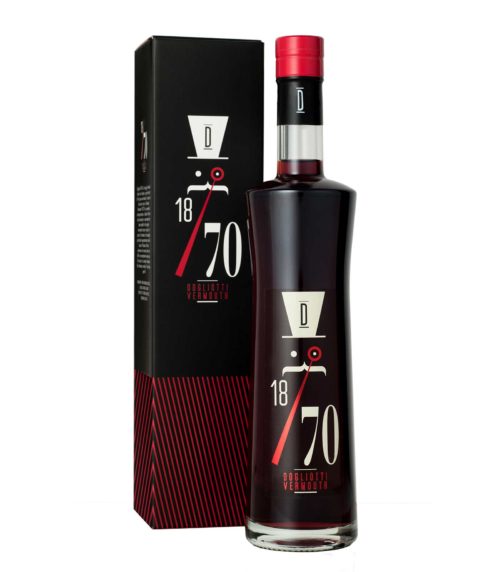This aromatic wine can be only produced in 52 villages in the southern part of piedmont, in within Asti, Alessandria and Cuneo. It is produced from Moscato Bianco grapes and is known for its surprising perfume-like fragrance, light-body, semi-sparkling, spritzy character lower alcohol content (typically to the tune of the around 5-8% abv) and its dazzling fruit-forward palate profile with a welcoming sweet factor. The wine’s colors steers towards straw yellow with occasional tinges of gold. Moscato’s inherent aromatics are simply stunning – orange blossom, honeysuckle, almonds, ginger and fruit dominated by green grapes, citrus tones and ripe peach nuances. On the palate, you can expect an impressive line up of fresh, forward fruit with sugar levels ranging from semi-sweet to sweet and wrapped in medium acidity From pear and apple, to orange and lime with consistent appearances in the ripe, juicy peach and apricot category, Moscato’s flavors are extraordinarily fruit-filled. The delicate cascade of bubbles, light body and sweet surprise culminate to woo and win many unsuspecting palates to the wide world of wine
DENOMINATION: Moscato d’Asti Docg YEAR: 2023 GRAPE VARIETY: 100 % Moscato Bianco VINE-TRAINING SYSTEM: Guyot SOIL: Clayey-calcareous, calcareous-siliceous GRAPE-HARVEST: Mid-August to early September MAX. CROP/HECTARE: 10 metric tons YIELD IN WINE: 75% ALCHOOL PERCENTAGE: 5,5 % Vol COLOR: Straw yellow with tinges of gold PERFUME: Orange blossom, honeysuckle, almonds, ginger and fruit dominated by green grapes, citrus tones and ripe peach nuance TASTE: From pear and apple, to orange and lime with consistent appearances in the ripe, juicy peach and apricot category FOOD MATCH: Fruit-based desserts, ice creams, Christmas desserts, and ideal to prepare cocktalis TEMPERATURE OF SERVICE: 8 – 10 ° C GLASS RECOMMENDED: Cup AGEING: None CONSERVATION: Cold storage in fresh wine cellars-
Made from a single vineyard, the historical one from the Dogliotti family, situated in Castagnole delle Lanze. This aromatic wine can be only produced in 52 villagesin the southern part of piedmont,in within Asti,Alessandria e Cuneo. It is produced from Moscato Bianco grapes and is known for its surprising perfume-like fragrance, light-body, semi-sparkling, spritzy character lower alcohol content (typically to the tune of the around 5-8% abv) and its dazzling fruit-forward palate profile with a welcoming sweet factor.The wine’s color steers towards straw yellow with occasional tinges of gold. Moscato’s inherent aromatics are simply stunning – orange blossom, honeysuckle, almonds, ginger and fruit dominated by green grapes, citrus tones and ripe peach nuances. On the palate, you can expect an impressive lineup of fresh, forward fruit with sugar levels ranging from semi-sweet to sweet and wrapped in medium acidity From pear and apple, to orange and lime with consistent appearances in the ripe, juicy peach and apricot category, Moscato’s flavors are extraordinarily fruit-filled. The delicate cascade of bubbles, light body and sweet surprise culminate to woo and win many unsuspecting palates to the wide world of wine
DENOMINATION: Moscato d’Asti Berlet Docg YEAR: 2023 GRAPE VARIETY: 100 % Moscato Bianco ALCHOOL PERCENTAGE: 5,5% Vol COLOR: Golden straw colour PERFUME: Orange blossom, honeysuckle, almonds, ginger and fruit dominated by green grapes, citrus tones and ripe peach nuance TASTE: From pear and apple, to orange and lime with consistent appearances in the ripe, juicy peach and apricot category FOOD MATCH: Fruit-based desserts, ice creams, Christmas desserts, and ideal to prepare cocktalis TEMPERATURE OF SERVICE: 8 – 10 ° C GLASS RECOMMENDED: Cup AGEING: None CONSERVATION: Cold storage in fresh wine cellars -
The wine has a brilliant, straw yellow color with light, golden reflections. It has a balanced, fine, and persistent frothiness. Its delicate perlage melts in the mouth for a very pleasant sensation. On the nose, it has the typical aroma of Moscato, a profume that combines musk, sage, white flowers, and – because of its aging – yellow fruits, ripe apricot, and vanilla. In the mouth, its light, unsticky sweetness is surprising and contrasts perfectly with its strong acidity. It is very persistent and leaves savory and mineral notes on the palate. This wine is a very personal interpretation of Moscato d’Asti. Because it’s important aromatic notes tend to diminish with aging, Moscato is a fresh, young wine consumed within a few years of harvest. Our Moscato has a unique vinification and aging it undergoes both before bottling and in the bottle, creating a long-lived Moscato where the principle aroma is not linalool (as it commonly is), but different and important sensations that are anything but typical. The 2011 grape harvest was carried out during the first week of September. After a brief cold maceration, the grapes are pressed and the must begins alcoholic fermentation. Part of it ferments in stainless steel under a controlled temperature with selected yeasts, and the rest is left to ferment with native yeasts in oak barrels. Once both fermentations are completed, the Moscato is left to age on the lees and the two separate parts are blended only in the pre-bottling stage. After bottling, the wine is left to age in the cellars for a minimum of 18 months before it is ready for sale. Our unique production method creates a wine that respects the traditional characteristics of Moscato d’Asti DOCG and yet differs in structure and freshness. For this, it can be paired with desserts as well as appetizers and delicate first courses.
-
This sweet sparkling white wine is considered to be Moscato’s brother but in a spumante version. It’s made with Martinotti Method, that means it is fermented in stainless steel tank for 3 months on the yeast
DENOMINATION: Asti Spumante Docg GRAPE VARIETY: 100 % Moscato Bianco ALCHOOL PERCENTAGE: 7,5 % Vol COLOR: Straw yellow with golden reflex PERLAGE: Consistent and fine PERFUME: Gentle and well balanced it reminders of Moscato grape’s aroma with pronounced sensation of bergamot and acacia flowers TASTE: Delicate and balanced with aromatic notes FOOD MATCH: Perfect for toasts it matches perfectly with fruit-based desserts, ice creams, Christmas desserts, and ideal to prepare cocktails and long drinks TEMPERATURE OF SERVICE: 6 – 8 ° C GLASS RECOMMENDED: Cup AGEING: None CONSERVATION: Cold storage in fresh wine cellars -
DENOMINATION: Alta Langa Docg VINTAGE: 2019 GRAPE VARIETY: Pinot Noir and Chardonnay ALCHOOL PERCENTAGE: 12 % Vol COLOR: Straw yellow with golden reflections PERLAGE: Fine and persistent PERFUME: Complex, scents ranging from bread crust to yeast, with some floral notes TASTE: Savory, intense, rich with good acidity FOOD MATCH: Ideal as an aperitif, it goes well with shellfish and fish-based dishes, appetizers and first courses TEMPERATURE OF SERVICE: 8 – 10 ° C GLASS RECOMMENDED: Not very large glass CONSERVATION: Up to 10 years
-
DENOMINATION: Vino Spumante Brut GRAPE VARIETY: Pinot Nero and Chardonnay ALCHOOL PERCENTAGE: 12 % Vol COLOR: Light straw yellow PERLAGE: Intense dry and complex PERFUME: Fine and consisten TASTE: Dry and savory FOOD MATCH: Great with fresh buffet, and appetizer TEMPERATURE OF SERVICE: 8 – 10 ° C GLASS RECOMMENDED: Tulip glass AGEING: None CONSERVATION: Cold storage in fresh wine cellars
-
Smooth, rich, well-balanced with a good savory end. Fresh and young wine that offers pleasant sensations. Able to improve over time for those who can appreciate wine more structured DENOMINATION: White Wine YEAR: 2020 GRAPE VARIETY: 100% indigenous white grape GRAPE-HARVEST: September ALCHOOL PERCENTAGE: 13 % Vol COLOR: Straw yellow with golden reflection PERFUME: Smooth, rich, well-balanced with a good savory end FOOD MATCH: Ideal for brunch. Good with light pasta dishes, white meat and fish TEMPERATURE OF SERVICE: 10 – 12 ° C GLASS RECOMMENDED: Tight wine cup AGEING: It should be drunk young, better in a couple of years CONSERVATION: Cold storage in fresh wine cellars
-
DENOMINATION: Piemonte Doc Chardonnay VINTAGE: 2023 GRAPE VARIETY: 100 % Chardonnay VINE-TRAINING SYSTEM: Guyot SOIL: Mainly clay-limestone-sand GRAPE-HARVEST: September MAX. CROP/HECTARE: 10 metric tons ALCHOOL PERCENTAGE: 13 % Vol COLOR: Straw yellow with green reflex PERFUME: Intense with flowary and fruity sensations TASTE: Dry, fresh, smooth with a bitter aftertaste FOOD MATCH: Great with fresh buffet, appetizer, white meat, and fish WINE MAKING: Soft pressing of the grapes in a horizontal membrane press, followed by fermentation at low temperature in steel tanks TEMPERATURE OF SERVICE: 8 – 10 ° C GLASS RECOMMENDED: Tulip glass AGEING: None CONSERVATION: Cold storage in fresh wine cellars
-
DENOMINATION: Roero Arneis DOCG VINTAGE: 2023 GRAPE VARIETY: 100 % Arneis VINE-TRAINING SYSTEM: Guyot GROWING LOCATION: Roero's hills SOIL: Mainly sandy-calcareous GRAPE-HARVEST: September MAX. CROP/HECTARE: 10 metric tons YIELD IN WINE: 70% ALCHOOL PERCENTAGE: 13 % Vol COLOR: Straw yellow with green reflex PERFUME: Subtle, fresh, slightly fruity, delicate bouquet TASTE: Dry, fresh, smooth with almond aftertaste FOOD MATCH: Great with ham asparagus, vegetables appetizers, fish and eggs WINE MAKING: soft pressing of the grapes in a horizontal membrane press, followed by fermentation at low temperature in steel tanks TEMPERATURE OF SERVICE: 10 – 12 ° C GLASS RECOMMENDED: Medium shaped glass AGEING: None CONSERVATION: Arneis requires no particular conservation, as it is a fresh, ready-to-drink wine
-
DENOMINATION: Rosé wine YEAR: 2022 GRAPE VARIETY: Blend of red grapes with a small percentage of Moscato grapes ALCHOOL PERCENTAGE: 12,5 % Vol FERMENTATION: In steel tanks MACEERATION: Short cryomaceration before pressing AGING: In steel tanks on fine lees for 12 months COLOR: Soft Pink with coppery reflections PERFUME: Delicate perfume with prevailing hints of red fruit combined with notes of white fruit TASTE: Full-bodied wine. Elegant, well-balanced, fresh with notes of red fruit. It’s Savory with a good acidity at the end FOOD MATCH: Great with appetizers, light pasta dishes, white meat and fish dishes TEMPERATURE OF SERVICE: 10 – 12 ° C GLASS RECOMMENDED: Medium shaped glass CONSERVATION: Ready to drink wine
-
DENOMINATION: Piemonte Doc Barbera Frizzante YEAR: 2022 GRAPE VARIETY: 100 % Barbera ALCHOOL PERCENTAGE: 11,5 % Vol COLOR: Beautiful ruby red color tending to garnet PERFUME: Intense with flowary and fruity sensations TASTE: Fresh, intense and characteristic aroma, dry with high aciity lightly tannic, and tends to become, with age, more full, harmonious and pleasant FOOD MATCH: It is a wine that can be served for the whole meal; great with cold cuts, ham traditional meal from piedmont, red and white meat, different kind of pasta and some kind of fish like eel and carp TEMPERATURE OF SERVICE: 6 – 8 ° C GLASS RECOMMENDED: Medium shaped glass AGEING: None CONSERVATION: Cold storage in fresh wine cellars
-
Barbera d’Asti is one of the most famous wine areas in Italy’s north-western Piedmont region. It became a DOC in 1970 and was upgraded to its DOCG classification in 2008, adding to Piedmont’s already impressive standing at this highest level of Italian wine classification. The Barbera d’Asti title covers the area around the town of Asti, and exclusively focuses on red wines made from Barbera
DENOMINATION: Barbera d’Asti Docg YEAR: 2023 GRAPE VARIETY: 100 % Barbera ALCHOOL PERCENTAGE: 14 % Vol COLOR: Beautiful ruby red color tending to garnet PERFUME: Intense with flowary and fruity sensations TASTE: Fresh, intense and characteristic aroma, dry with high aciity lightly tannic, and tends to become, with age, more full, harmonious and pleasant FOOD MATCH: It is a wine that can be served for the whole meal; great with cold cuts, ham traditional meal from piedmont, red and white meat, different kind of pasta and some kind of fish like eel and carp WINE MAKING: De-stemming, soft pressing of the grapes, fermentation and maceration on the skins for approx. 7/8 days at a controlled temperature. Micro oxygenation to increase the varietal aromas elevation. The malolactic fermentation is completed by the end of the winter, and the wine is stored in steel tanks and then in the bottle TEMPERATURE OF SERVICE: 18 – 20 ° C GLASS RECOMMENDED: Ballon AGEING: None CONSERVATION: Cold storage in fresh wine cellars -
Asti is one of the most famous wine areas in Italy’s north-western Piedmont region. Barbera d’Asti became a DOC in 1970 and was upgraded to its DOCG classification in 2008, adding to Piedmont’s already impressive standing at this highest level of Italian wine classification. The Barbera d’Asti title covers the area around the town of Asti, exclusively focuses on red wines made from Barbera
DENOMINATION: Barbera d’Asti Docg Superiore YEAR: 2021 GRAPE VARIETY: 100 % Barbera ALCHOOL PERCENTAGE: 14,5 % Vol COLOR: Beautiful deep ruby red color tending to garnet PERFUME: Intense with flowary and fruity sensation TASTE: Fresh, intense and characteristic aroma, dry with high aciity lightly tannic, and tends to become, with age, more full, harmonious and pleasant FOOD MATCH: It is a wine that can be served for the whole meal; great with cold cuts, ham traditional meal from piedmont, red and white meat, different kind of pasta and some kind of fish like eel and carp TEMPERATURE OF SERVICE: 18 – 20 ° C GLASS RECOMMENDED: Ballon AGEING: Years CONSERVATION: Cold storage in fresh wine cellars -
As the 18 municipalities in the Nizza area have proved to be historically some of best for the production of Barbera, in the 90’s, the local producers applied for recognition of the area as a “subzone”, this being the only way to obtain the appellation “Nizza DOCG”. In the 15 years since then, the producers have had the opportunity to test the rulebook and to adjust it slightly, gradually drafting the document we have today. The use of the geographical name “Nizza” instead of the grape variety brings together the tradition, culture and a unique terroir. DENOMINATION: Nizza Docg VINTAGE: 2020 GRAPE VARIETY: 100 % Barbera ALCHOOL PERCENTAGE: 14,5 % Vol COLOR: Deep ruby red color tending to garnet PERFUME: Enveloping, soft, with notes of red fruit, among which stand out cherry and plum TASTE: This is a structured, round, well balanced wine, with a long persistence and a spicy final taste FOOD MATCH: This wine is great with fresh pasta with meat or mushroom sauce, roasted and braised red meats, truffled foods, aged hard cheese TEMPERATURE OF SERVICE: 18 – 22 ° C GLASS RECOMMENDED: Ballon AGEING PROCESS: In French oak Tonneaux for 24 months, minimum 6 months of ageing in the bottle CONSERVATION: The great structure allows the wine a long life. If stored in cool underground cellars or in environments with low and constant temperatures, it can be aged and improved for years
-
Dolcetto d’Alba is one of seven Dolcetto DOCs produced in Italy’s north-western Piedmont region. The wine is named after the grape from which it is made and the area where it is produced
DENOMINATION: Dolcetto d'Alba Doc VINTAGE: 2022 GRAPE VARIETY: 100 % Dolcetto VINE-TRAINING SYSTEM: Guyot GROWING LOCATION: Alba, Albaretto della Torre, Barolo, Castiglione Falletto, Cherasco, Grinzane Cavour, La Morra, Monforte d’Alba, Montelupo Albese, Novello, Serralunga d’Alba, Verduno, Roddi, Roddino SOIL: Clayey-calcareous, calcareous-siliceous GRAPE-HARVEST: September MAX. CROP/HECTARE: 9 metric tons YIELD IN WINE: 70% ALCHOOL PERCENTAGE: 13 % Vol COLOR: It has a characteristically purplish ruby-red color PERFUME: Winey, inviting, with varietal character TASTE: Wine noted for its juicy fruit character, low levels of acidity and mild tannins. its aromas are reminiscent of lavender and violets with a hint of almonds and bitterish after taste FOOD MATCH: It ‘s a wine for the whole meal WINE MAKING: De-stemming, soft pressing of the grapes, fermentation and maceration on the skins for approx. 7/8 days at a controlled temperature. Microxygenation in order to soften the tannins and to elevate the nose. After the malolactic fermentation, the wine is stored in steel tanks and then bottled TEMPERATURE OF SERVICE: 16 – 20 ° C GLASS RECOMMENDED: Ballon AGEING: None CONSERVATION: Cold storage in fresh wine cellars -
Grignolino is a red grape grown almost exclusively in the Piedmont region of northern Italy. This grape produces dry wines with a delicately perfumed bouquet. The wines are either light fruity red wines or refreshing fragrant roses. It is at its best when drunk cool and young. Wines made from Grignolino have high acid levels and light tannins. The name of the grape comes from a word in the local dialect that means “grape pips” (seeds). It is thought that the name came from the fact that this particular variety has an abundance of seeds in each grape. Grignolino is a slow maturing grape that is best suited for warmer areas that have long growing seasons. It reaches maturity near the beginning of October
DENOMINATION: Grignolino d'Asti Doc VINTAGE: 2022 GRAPE VARIETY: 100 % Grignolino VINE-TRAINING SYSTEM: Guyot SOIL: Mainly calcareous-sandy MAX. CROP/HECTARE: 9,5 metric tons YIELD IN WINE: 65% ALCHOOL PERCENTAGE: 13 % Vol COLOR: Light red that tend to rosè PERFUME: Fresh, lively aroma with a clear-cut hint of white pepper and delicate spices TASTE: Intense and characteristic aroma, dry with high aciity lightly tannic FOOD MATCH: These are good wines to have with salamis and cheeses of medium seasoning, and also match well with beef and also with fish WINE MAKING: pressing of the grapes, followed by de-stemming and fermentation at a controlled temperature in heat-conditioned tanks. Maceration for 4/5 days, and drawing off while still sweet so complete its fermentation on the skins TEMPERATURE OF SERVICE: 15 – 18 ° C GLASS RECOMMENDED: Medium shape glass AGEING: None CONSERVATION: Cold storage in fresh wine cellars -
Nebbiolo d’ Alba is a DOC encompassing a large area around the town of Alba, situated in the region of Piedmont in north-west Italy. Granted its classification in 1970, the wines are namedafter the red grape Nebbiolo from which they are made, and the area where they are produced (Alba). This variety is considered the king of italian red grapes, profilic in the Piedmont region and the backbone of the internationally renowned DOCG wines Barolo and Barbaresco
DENOMINATION: Nebbiolo d'Alba Doc YEAR: 2022 GRAPE VARIETY: 100 % Nebbiolo VINE-TRAINING SYSTEM: Guyot GROWING LOCATION: Alba, Diano d'Alba, Grinzane Cavour, La Morra, Monchiero, Monforte d'Alba, Montelupo Albese, Novello, Roddi, Roddino, Verduno SOIL: Siliceous-clayey GRAPE-HARVEST: October MAX. CROP/HECTARE: 9 metric tons YIELD IN WINE: 70% ALCHOOL PERCENTAGE: 14% Vol COLOR: Ruby red colour, tending to garnet PERFUME: Light and delicate with a hint of violets TASTE: From dry to invitingly sweet, with good body and tannins when young; smooth and well-balanced FOOD MATCH: Red meat, game meatm stewed meat, mature cheese WINE MAKING: De-stemming, soft pressing of the grapes, fermentation and maceration on the skins for approx. 10 days. During the maceration the must is pumped over in the dèlestage way to extract the colour and varietal aromas. After two decantation to eliminate the solid parts come the malolactic fermentation. Then the wine is matured in wooden casks of different status for 12 months, with weekly topping-up, tastings and analyses to make sure the wine is developing correctly TEMPERATURE OF SERVICE: 18 – 20 °C GLASS RECOMMENDED: Ballon AGEING: 2 years, with 1 in oak casks from France or from Slavonia and then 12 months in the bottle before being released to the market CONSERVATION: Cold storage in fresh wine cellars -
Barbaresco has always been considered Barolo’s ‘twin’ , arriving more or less simultaneously at the same set of regulatory laws, stimulating the foundation of the Consortium in 1934, becoming one of the first Italian Doc wines in 1966 and, in 1980, one of the first Docg wines; it is produced entirely from Nebbiolo grapes
DENOMINATION: Barbaresco Docg YEAR: 2020 GRAPE VARIETY: Nebbiolo in its Michet and Lampia sub-varieties VINE-TRAINING SYSTEM: Guyot GROWING LOCATION: Alba, Barbaresco, Neive, Treiso SOIL: Clavely-calcareous GRAPE-HARVEST: October MAX. CROP/HECTARE: 8 metric tons YIELD IN WINE: 70% ALCHOOL PERCENTAGE: 14,5% Vol COLOR: Garnet-red, with orange highlights PERFUME: Violet bouquet, ethereal, intense TASTE: Dry, quite tannic, fine, elegant, demanding but velvety and well-balanced FOOD MATCH: Aromatic casseroles and stew of red meat and game-furred game roasts, truffle flavored feathered game, mature cheeses WINE MAKING: De-stemming, soft pressing of the grapes, fermentation and maceration on the skins for approx. 20 days. During the maceration the must is pumped over in the dèlestage way to extract the colour and varietal aromas. After two decantation to eliminate the solid parts came the malolactic fermentation. Then the wine is matured in wooden casks of different status for 12/16 months, with weekly topping-up, tastings and analyses to make sure the wine is developing correctly TEMPERATURE OF SERVICE: 18 – 20 ° C GLASS RECOMMENDED: Ballon AGEING: In oak casks from France or from Slavonia for 12/16 months and then at least 12 months in the bottle before being released to the market. Depending on the vintage, Barbaresco can be kept for several decades; store bottles lying down in a dark, damp-free environment at cool temperature. It can be at its top 5 years after vintage CONSERVATION: Cold storage in fresh wine cellars -
This is the Grand Italian Wine by definition produced entirely with Nebbiolo grapes. Barolo wine comes from the village in the Langa bearing the same name a few kilometres south of Alba. It is now made in eleven ‘communes’ of village territories, all situated on the scenic Langa hills shaped by centurie of vine cultivation and dominated by medieval castles including Barolo‘s own
DENOMINATION: Barolo Docg YEAR: 2019 GRAPE VARIETY: Nebbiolo in its Michet, Lampia and Rosè sub-varieties VINE-TRAINING SYSTEM: Guyot GROWING LOCATION: Barolo, Castiglione Falletto, Cherasco, Diano d'Alba, Grinzane Cavour, La Morra, Monforte d'alba, Novello, Serralunga, Verduno, Roddi SOIL: Clavely-calcareous GRAPE-HARVEST: October MAX. CROP/HECTARE: 8 metric tons YIELD IN WINE: 70% on first racking, 65% after regulation ageing period ALCHOOL PERCENTAGE: 14,5% Vol COLOR: Garnet-red with orange highlights PERFUME: Violet and dog-rose bouquet with leather and spicy note TASTE: Dry, quite tannic, mouth-filling, demanding velvety and well-balanced FOOD MATCH: Grilled meat, game meat, mature cheese, savory meals according with the piedmont traditional food WINE MAKING: De-stemming, soft pressing of the grapes, fermentation and maceration on the skins for approx. 10 days. During the maceration the must is pumped over in the dèlestage way to extract the colour and varietal aromas. After two decantation to eliminate the solid parts come the malolactic fermentation. Then the wine is matured in wooden casks of different status for 24/30 months, with weekly topping-up, tastings and analyses to make sure the wine is developing correctly TEMPERATURE OF SERVICE: 18 – 22 °C GLASS RECOMMENDED: Ballon AGEING: 3 years, with 2 in oak casks from France or from Slavonia and then 12 months in the bottle. Depending on the vintage, Barolo can be kept for several decades; store bottles lying down in a dark, damp-free environment at cool temperature. It can be at its top 7 years after vintage CONSERVATION: Cold storage in fresh wine cellars -
Denomination: White Vermouth made with Moscato d 'Asti Docg Region: Piedmont Year: No vintage required Varietal: 100% Moscato d’ Asti Docg Alcohol content: 14,5% by Vol Color: Bright golden tones coming from Moscato wine, brilliant, intense (no added colors) Nose: The nose is delicate, expressive and elegant. Like a typical Vermouth, its aromatic notes mingle with spices and herbs, particularly absinthe. The perfume is light fruity, floral with citrus notes. Palate: The taste it is a continual evolution in sensations, it is intriguing and inviting. In the mouth it's rich and full-bodied. An initial sweetness is balanced with its fine, acidic structure and final bitter taste. Pairings: Born as an aperitif but also well appreciated in combination with chocolate cakes, pralineries, dried fruits. Great if you mix it in cocktails with endless combination, even better to drink on the rock. Ideal serving temperature: 8 - 10 ° C Glass: Classic aperitif glass or cocktail cup Conservation: 3 years
-
Denomination: Red Vermouth made with Barbera d 'Asti Docg Region: Piedmont Year: No vintage required Varietal: 100% Barbera d’ Asti Docg Alcohol content: 16% by Vol Color: Ruby red coming from Barbera wine, brilliant, intense (no added colors) Nose: The nose is an explosion of herbs and spices that overlap the fruity notes coming from the Barbera wine. You can feel the absinthe, typical Vermouth essence, well balanced with the rich context that alternates scents of floral notes, spicy notes and fruity notes, wild berries, black cherry and cocoa. Palate: In the mouth the flavour is full, velvety, bitterish although the sweetness prevails. Pairings: Born as an aperitif but also well appreciated in combination with chocolate cakes, pralineries, dried fruits. Great if you mix it in cocktails with endless combination; from the classic Americano or Negroni to the most innovative proposals of international barman; distinctive feature which imprints on mixing. Ideal serving temperature: 8 - 10 ° C Glass: Classic aperitif glass or cocktail cup Conservation: 3 years


